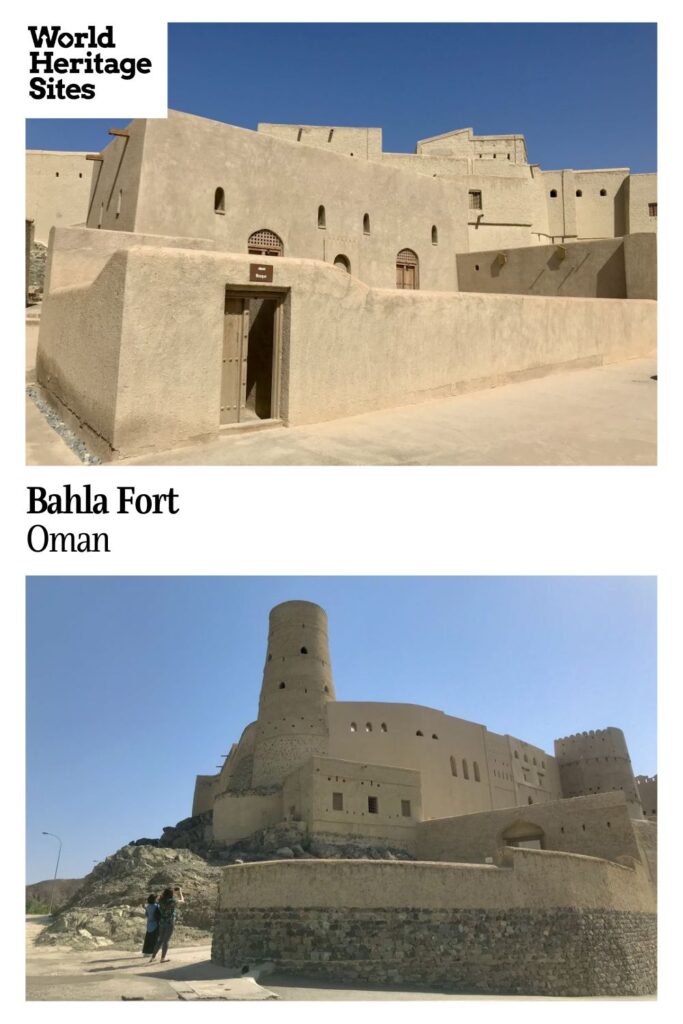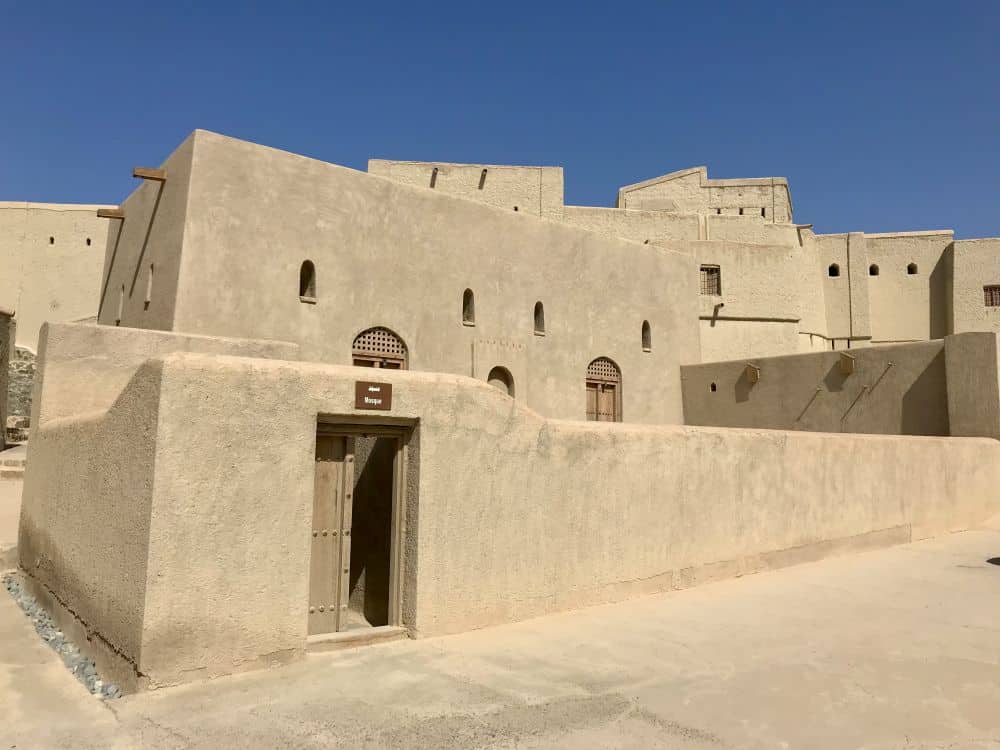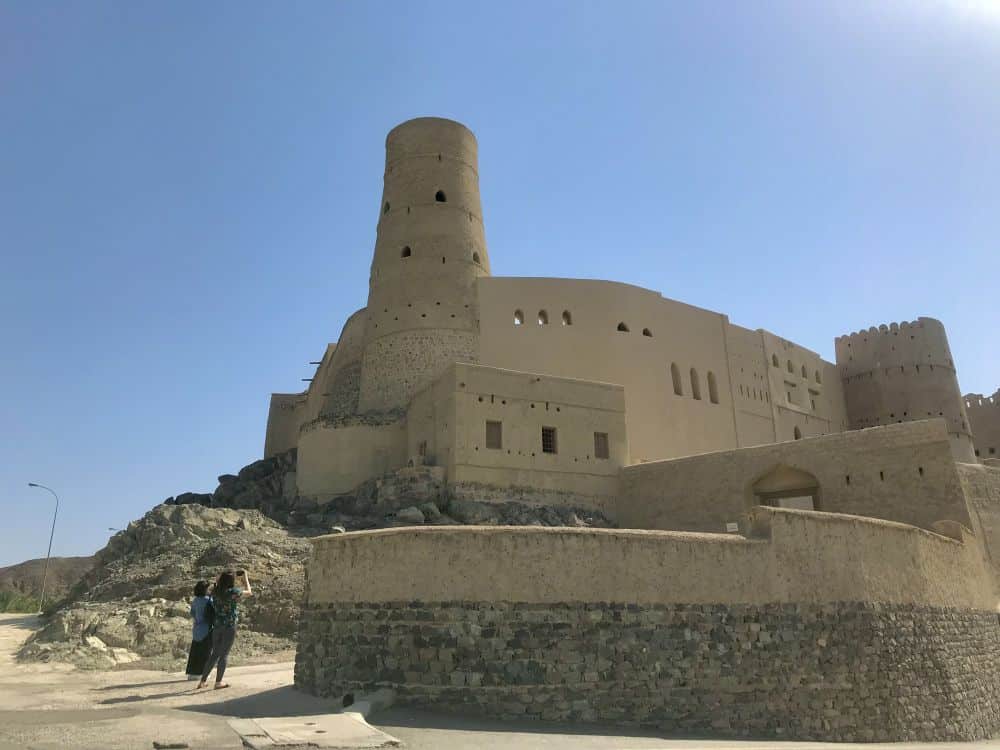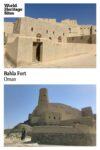Bahla Fort
By Teja
What is Bahla Fort?
Bahla Fort is the immense, ancient mud-brick fortress of the Banu Nebhan, the dominant clan in the Omani interior during the 12th to 15th century. The capital of the Banu Nebhan, it was a centre of influence during the feudal Imamate era of Oman. Part of this influence was also as the centre of Ibadism, a lesser-known branch of Islam, which is the dominant branch still practised in Oman.
Disclosure: This article contains affiliate links. Making a purchase through an affiliate link will mean a small commission for this website. This will not affect your price. Privacy policy.
The massive towers and parapets, which surrounded the whole town, testify to the wealth of the clan during the peak of their influence, when they were seen as the leader of the Imamates of Oman.
Much like Al Ain UNESCO site in the United Arab Emirates, Bahla was an oasis where agriculture was carried out using the ancient falaj system of irrigation.

Why is Bahla Fort a UNESCO World Heritage site?
The structure of Bahla Fort is an “outstanding example of a fortified oasis settlement”, according to UNESCO’s website, incorporating the Banu Nebhan’s water engineering skills and mud-brick construction technology. The mud-brick medieval settlement around it is included in the heritage site. The adjacent Friday Mosque is particularly historical, as it was the site where the Omani clans met to choose the leader of the Imamates.

What can you expect on a visit to Bahla Fort?
Bahla Fort is prominent in the landscape, looming on a hill. It is a large, sprawling fortress, clearly meant to house a sizable garrison. The structure looks well-maintained, though the interior is strikingly bare. The tourist information is basic, giving little of its deep history.
Less-visited among the tourist attractions in Oman, it is easy to have Bahla Fort to yourself. Within, the rooms and halls are solemn. Bats hang from the ancient rafters, occasionally flying and chittering overhead. Up on the walls, you can look down upon the oasis settlement the fort watched over, in times long past. The mud-brick homes are largely still standing; some have fallen into disrepair.
The souk lies opposite the fort, on the other side of the main street. It is still an active market, modernity beginning to seep into the centuries of history. The historical Friday Mosque is at the end of a street running along the base of the hill where the fort stands. There is another old mosque closer to the main street, which should not be confused for the actual historical mosque.

Is Bahla Fort worth visiting?
Bahla Fort is a worthy visit for those who are already in Oman. The site is likely to be of particular interest to those who are into castles and medieval history. In time, perhaps the tourist information and exhibits will be augmented to better showcase these aspects.
As the fort is the sole point of interest, Bahla is suitable for a day trip or a half-day visit.
There are plenty of one-day tours available from Muscat that include Bahla Fort. Alternatively, this one-week Oman tour includes a stop at Bahla Fort.
Tips for visiting Bahla Fort
Bahla is a settlement in the dry interior of Oman. Midday is hot, which limits exploration of the spacious central courtyard and the fortress walls. Try to visit early in the morning or in the late afternoon. Bring water with you, as there are no convenient cafes or shops at the site. The nearest shops are in the souk all the way down the hill.
Bahla is close to other notable sites and attractions. A road trip can easily combine it with Nizwa, an important medieval trading city, and Jibreen Castle, a well-preserved 17th-century keep. Along the way, there is the option of visiting the charming hill village Misfat al Abriyeen, a popular weekend spot for Muscat city dwellers, as well as Al Hoota cave (ideal for midday, due to the coolness within the cave).
Use this link to book accommodations in Bahla or in Muscat.
Where is Bahla Fort?
Bahla is located in the north of Oman, about two hours’ drive inland from the capital city of Muscat. The most practical way of getting there is by hiring a car, and driving there. A free parking area is provided near the old settlement next to the fort. There is no intercity public transportation in Oman.
Opening hours are 9am to 4pm. Entrance fees are very affordable for a site of its stature, at only 500 baiza (half an Omani rial).
Have you been to Bahla Fort? If so, do you have any additional information or advice about this UNESCO World Heritage site? Please add your comments below!


